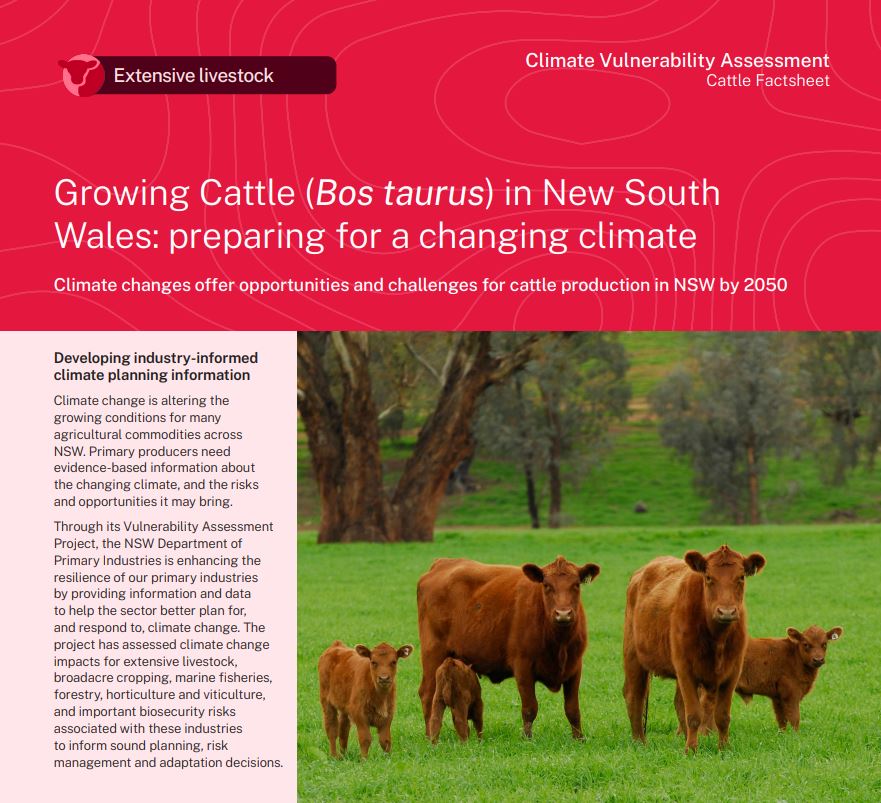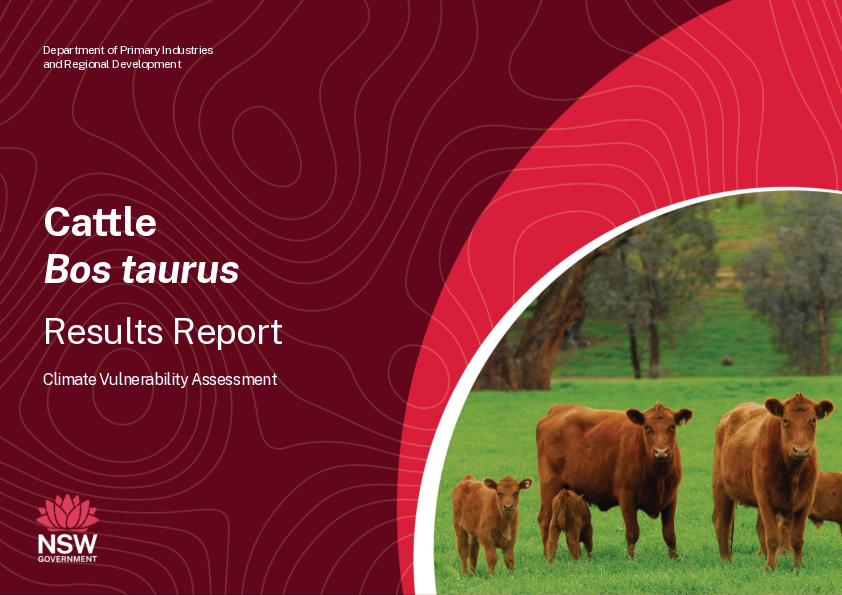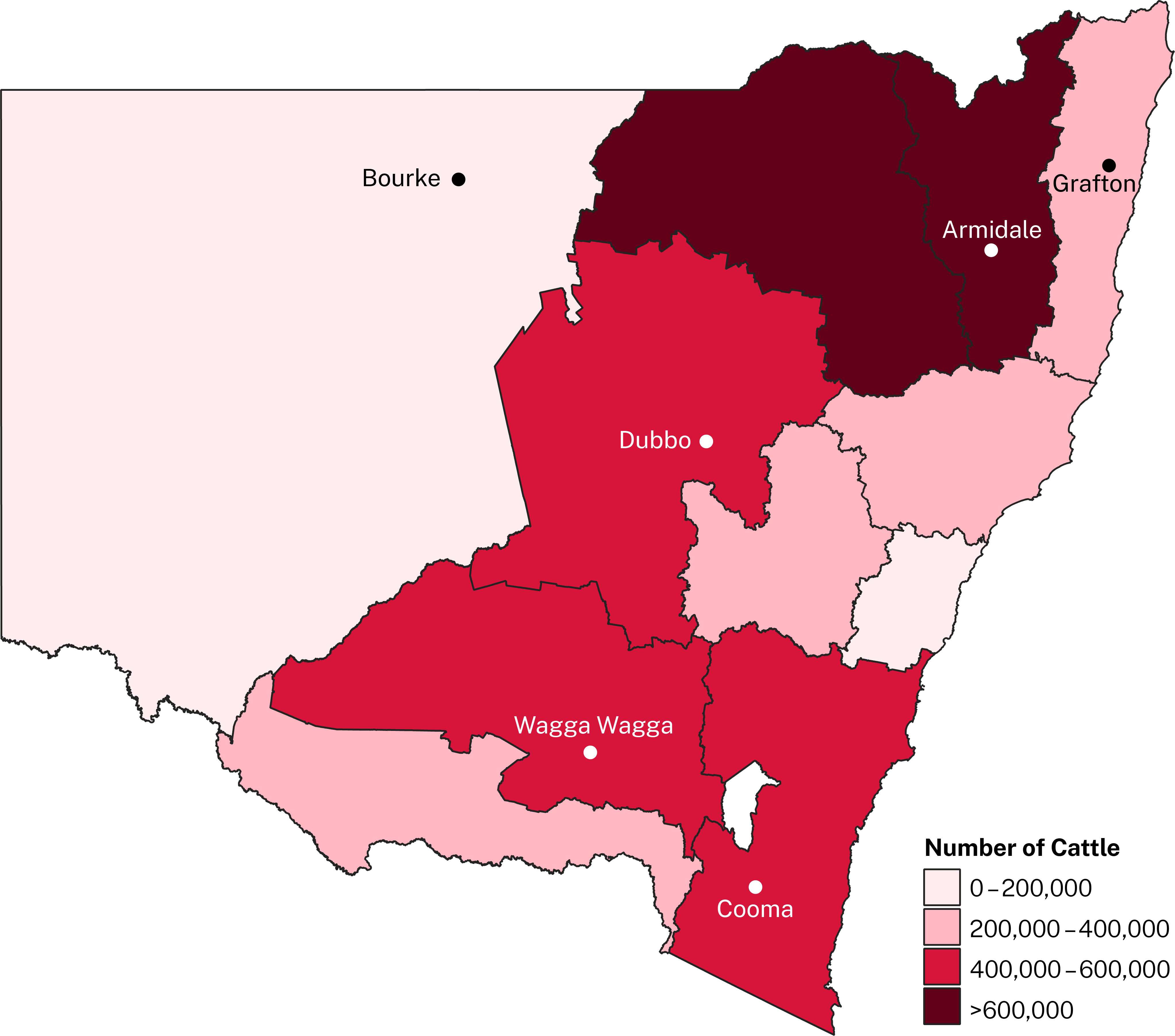What is the NSW DPIRD Climate Vulnerability Assessment? ⏷
Climate change is altering the growing conditions for many agricultural commodities across NSW. Primary producers need evidence-based information about the changing climate, and the risks and opportunities it may bring.
The NSW DPIRD Climate Vulnerability Assessments are enhancing the resilience of our primary industries by providing information and data to help the sector better plan for, and respond to, climate change. They have assessed climate change impacts for extensive livestock, broadacre and irrigated cropping, marine fisheries, forestry, horticulture and viticulture, and important biosecurity risks associated with these industries to inform sound planning, risk management and adaptation decisions.
How we assessed climate suitability ⏷
Climate projections were sourced from Climate Change in Australia’s ‘Application Ready Data’. This dataset is comprised of projections from an ensemble of 8 global climate models, each presenting a plausible future climate. The models differ in their projections, giving rise to uncertainty which is reflected in the confidence statements given in brackets. Care should be taken when interpreting these results.
The Climate Vulnerability Assessment is intended to highlight potential industry- or regional-level changes. Intermediate and high emissions scenarios were used in the assessments (RCP4.5 and RCP8.5), but these are not the only future scenarios possible. The inclusion of climate variables important to the commodities production was based on published research, expert knowledge and data quality and availability.
Learn more in the Climate Vulnerability Assessment Project Framework.
Climate impacts: what to expect
Climate suitability for cattle is expected to maintain very high climate suitability across the entire state under both emissions scenarios.
Cattle vulnerabilities
- Joining and calf feed intake are likely to experience a minimal reduction in climate suitability (high confidence) due to higher temperatures and humidity. In NSW's central and western regions, where minor negative changes are expected, these impacts are likely to be exaggerated if producers join 1-2 months later than the model-defined period of early October to mid-December.
Cattle opportunities
- Climate suitability in survivability and lactation will remain very highly suitable (high confidence).
Adapting to the changing climate
Adapting to heat stress
- Moving joining forward is a potential adaptation for adjusting cattle to heat stress. Dates will depend on the region, but calving in late spring instead of early summer could mitigate heat exposure of calves. However, sometimes this is not possible or is complicated by a lack of oestrus in cows due to low body weight or fat scores. In those situations, weaning calves earlier in warmer years to maintain cow body weight is a demonstrated management option.
Where can I find the climate suitability maps?
Maps of historical and future climate suitability for commodities were produced to demonstrate where in the state a commodity is likely to thrive or else be limited by future climatic conditions. The maps are provided in the Cattle Results Report (PDF, 2752.12 KB).
Cattle Factsheet
(PDF, 392.75 KB)

Cattle Results Report
(PDF, 2752.12 KB)

 The beef cattle industry in NSW is significant, representing around 20% of Australia’s cattle and calves. There are approximately 4 million head of beef cattle distributed across the state. This model focused on a winter/early spring Bos taurus cattle operation, as it is the most representative of the industry in NSW and is well-suited to the state’s varied climates. The map shows the main cattle growing regions in NSW. Darker colours represent a higher number of cattle.
The beef cattle industry in NSW is significant, representing around 20% of Australia’s cattle and calves. There are approximately 4 million head of beef cattle distributed across the state. This model focused on a winter/early spring Bos taurus cattle operation, as it is the most representative of the industry in NSW and is well-suited to the state’s varied climates. The map shows the main cattle growing regions in NSW. Darker colours represent a higher number of cattle.